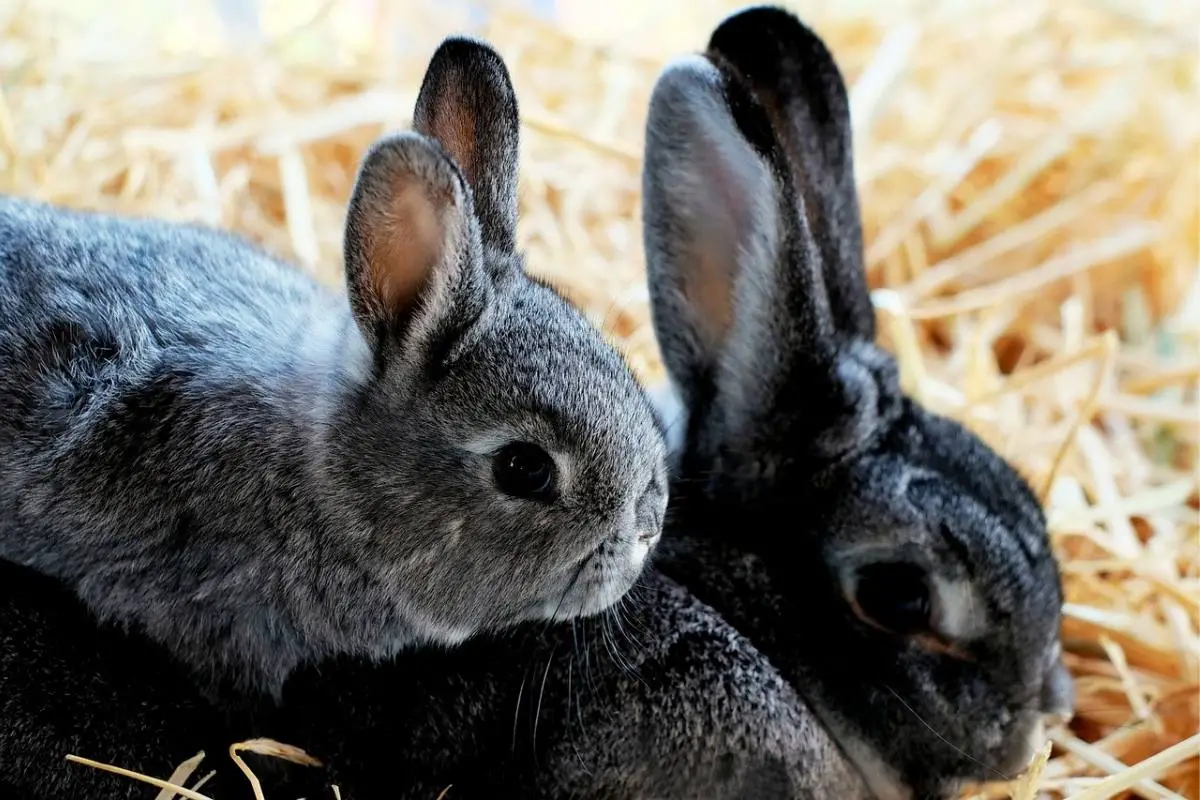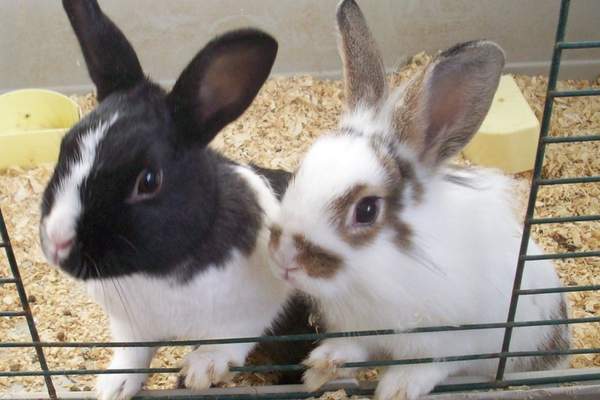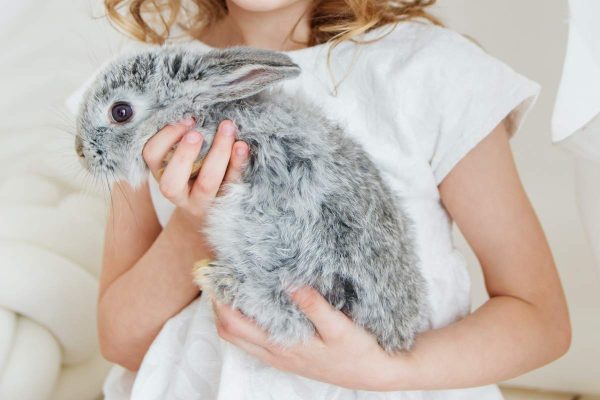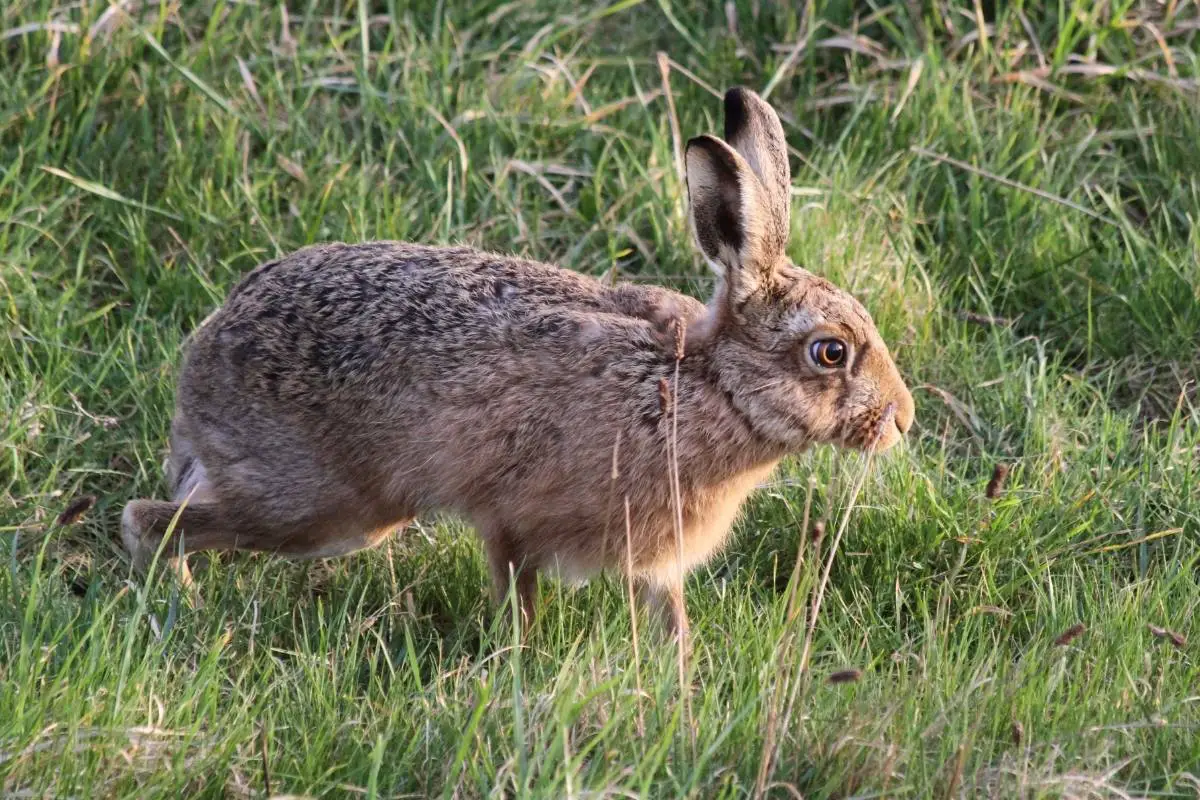We use the phrase, “breed like rabbits” for a reason. In relation to each other, rabbits have one of two things on their minds: breeding and dominance.
So, why does my female rabbit run away from the male rabbit? If the rabbits are male and female, they are likely playing together before mating. If the rabbits are the same sex, dominance is the issue, and a fight may be brewing.
Rabbits are quick to mate but slow to bond, so if one rabbit is running away from the other, the answer is simple, but the solution is complicated. In this article we will look at the rabbit’s instinct to mate and have dominance and their disinclination to bond and how to overcome both.
Rabbits Want to Mate

The rabbit’s impulse to mate overcomes all other things that we might consider taboo. Brothers and sisters, fathers and daughters, once rabbits come of age, all relational bets are off.
When and How
Nothing is cuter than a baby rabbit (called a kitten), and a group of them simply gush cuteness. But you have a limited amount of time to enjoy them in a non-sexual state. Rabbits are usually ready to mate between 4 to 6 months old.
Females don’t ovulate until after they’ve mated, so basically, they are always in estrus. Gestation lasts around a month (give or take a few days depending on the breed), so very soon after having conceived the first litter, does (female rabbits) are ready to conceive the next.
When the doe is receptive to mating, she can rub her chin on everything from the cage to the water bottle. When in the presence of the buck (male rabbit) she sometimes runs away from him as a way of playing before mating.
How to Intervene
Unless you are an experienced and responsible breeder, the best thing to do is separate your baby bunnies when they reach maturity. If you feel confident in mating your rabbits, which can be done as early as three weeks, you can try keeping males and females together.
But mating can be tricky and you will need to watch out for dominant behavior, especially among two intact males, even if they’re litter mates (more on that later).
Once your rabbits are separated, you need to have them spayed or neutered. To my knowledge, no one has ever complained that there aren’t enough rabbits in the world, so be responsible. But if rabbit pregnancy isn’t enough cause, spaying or neutering your rabbits can help decrease the possibility of a variety of cancers, urine spraying, and aggressive behavior.
Dominance
Unlike cats and dogs, wild bunnies are not pack animals. Mom and dad probably didn’t pause long enough to get each other’s name, and neither stuck around to raise the kids. This means bunnies are naturally solitary and highly territorial animals, so another reason that your rabbit is running away from your other rabbit is that they are dealing with dominance.
Rabbit Pairs

The best kinds of rabbit pairs are male and female, as long as they have been spayed and neutered. They will vie for dominance, but without a lot of aggression. Male rabbits are less likely to get along well with each other because they have competing instincts to fight for control over who gets to mate with a doe.
However, if the male rabbits are litter mates, they may be more likely to get along without fighting. Even so, if you have two males you will want to neuter them in order to decrease their natural aggression and hormonal desire to get at a female.
Fighting Versus Playing
Bonded rabbits enjoy doing things together and playing, but because they are territorial creatures, playing can turn to fighting. How do you tell the difference?
Rabbits will often initiate play with little nips or “digging” at the other’s paws as a way of getting attention. This will sometimes be followed with a startled jump but can lead to a variety of harmonious activities like running and jumping or digging together.
When rabbits start to become more aggressive, they circle and chase and can also backwards mount and try to bite each other’s genitals. When this happens, you want separate the rabbits immediately. As surprising as this may sound, rabbits have the ability to seriously harm and even to kill.
Even when you have a male and female rabbit who are neutered and spayed, you will have to take time to create a bond between the two of them if you want them to live together peacefully.
Bonding
Bonding bunnies with each other takes a surprising amount of work. They’re not like dogs who basically sniff each other’s butts and are good. Bonding bunnies takes time, patience, the ability to stay calm, and the knowledge that you might have to do the whole process again.
If one of your rabbits is running from the other one, then you’ll need to facilitate a bond between the two.
How to Bond Your Bunnies
The first step is to stay calm. If you are frazzled, your rabbits will sense that and be stressed out as well. This process usually takes about a week but can last as long as several months. So, take a couple deep breaths and settle in for the long haul.
Start out by putting them together in a neutral space that is small and does not “belong” to either bunny. You can use a bathroom, laundry room, or portable pen. Let them get use to each other but take them out when you see signs of nervousness, anxiety, or irritability.
Slowly, you want to increase the amount of time they spend together. As they are able to spend longer amounts of time together, you can start increasing the amount of space they occupy together.
Move them to a larger room, or a larger penned-in area outside, but don’t increase the space too quickly. If they have too much space too soon, they will separate and forget how to act with each other.
Don’t put them in a cage together until they have been comfortable with each other without fighting for several days. Keep your eye on their behavior. If they start fighting you will want to separate them, but only if they are truly fighting.
Both male and female rabbits will mount each other and nip or “dig” at each other to get attention. Note the distinctions of aggressive behavior listed above. When they move to that, or if they have a fight, you have to separate them.
How to Bond Your Bunnies Again

Once you have created a bond between your rabbits, they will play, dig, eat, and sleep together, occasionally taking some alone time. They will function calmly within a hierarchy, but they will be almost inseparable, and you want to keep it that way.
But sometimes a separation, or a break in the bond happens. There will come a time when you have to take one bunny to the vet and he or she may come back smelling differently. Or they will have a fight and you will have to separate them. Or they will simply stop liking one another.
Whatever the cause, a break in the bond can happen, and unfortunately that means you have to go back to the beginning of the bonding process. This means another dedicated time of patience and slow building of the bond.
One thing that may help you with this process is to keep a diary of how your bunnies are interacting day by day. This may help you to be more observant of their personalities and the certain signs they give to signal irritation, anxiety, etc.
Conclusion
At a distance, rabbits look like simple-minded, serene creatures that wiggle their noses and want nothing more than to curl into a soft ball in your arms. Up close, it’s a bit more complicated. If your rabbit is running away from your other rabbit, there are several things you’ll want to consider.
If they are kittens approaching four months old, you will want to separate them until you can have them sexed and spayed or neutered as appropriate. Females could be running away from males to begin the mating process. Don’t breed your rabbits just because you think it might be fun. That can get out of control quickly, so stick with the ones you have and get them fixed.
You will also want to neuter the male rabbits in order to lower their testosterone, thus lowering their aggression. Remember, rabbits are not pack animals and are highly territorial, both males and females, so chasing and circling could be a sign that a fight is about to start over dominance.
Rabbits rarely get along without help. You have to create a bond slowly and patiently, staying calm, deliberate, and focused. But once you have that bond, they’ll want to do everything together. No more running away.

